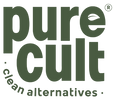Cleaning products reduce a lot of effort in keeping our homes polished. But not all the ingredients are safe for living beings. So how to identify what they are actually made up of? After all, it is about the 'home' and the health of everyone living in it.
We can always check the constituent components of any item or product through its label. Volatile organic compounds (VOCs) levels will remain high within our homes after cleaning because of the hidden toxic ingredients that are not visible on the label.
Check out these 3 toxic chemical ingredients you won't find on the label of cleaning products.
1.Phthalates are the significant fragrance constituents which fluster the endocrine system of humans
Disinfection is not the only thing we check in the cleaning products; we also decide on the product based on the fragrance. Did you know that in most of the products, fragrances are not natural? Phthalates present in the artificial fragrances account for the aroma of the cleaning agents. As companies need not disclose the agents responsible for fragrance, no label has phthalates described in their list.
However, phthalates are renowned as endocrine system disturbers and cause immense damage to our body's chemical reaction system. As our skin is not resistant to such toxins, the observed chemicals are directly routed towards the internal organs. Thus, the harm caused is much more severe than we imagine.
Environmental Working Group (EWG) researchers found more than 75 percent of products listing the ingredient “fragrance” contain phthalates (THAL-ates) which have been shown to disrupt hormone activity, reduce sperm counts, and cause reproductive malformation and have been linked to liver and breast cancer, diabetes, and obesity.
2.The antibacterial labeled cleaners contain unfolded Quaternary ammonium compounds (QUATs) and Triclosan
Cleaning agents must kill the bacteria and germs, and we all look for the best label of "antibacterial". Nevertheless, the chemical components that encourage the aseptic conditions are highly toxic. Triclosan and QUATs are used to serve this purpose which accounts for the major environmental and human crises.
Again, these are never mentioned on the label. The inclined posture of the characteristics itself is printed on the tag.
3.Methylisothiazolinone (MIT) & Methylchloroisothiazolinone (CMIT) are used to enhance the preservative nature of cleaners
Market available cleaners can indeed be stored for many months. The preservative properties are quite high and are caused due to the mixture of MITs and CMITs. As an end-user, we like the perks of a cleaner's conservative nature, but it should not be at the cost of our own lives. MITs and CMITs are responsible for allergic reactions, inhalation issues, and neurotoxicity.
Hence, it is always advised to find the tag of MIT-free or CMIT-free before purchasing the cleansing product. But it is challenging to find such!
Creating and maintaining a zero-toxic environment is tremendously difficult. But, we can always reduce the levels of toxic ingredients and our exposure to them. One such remarkable alternative for this issue can be natural cleaning agents.
After all, while cleaning the home, your concern should be fighting grime and dirt but not fighting for health.
Read this to know everything about natural cleaners.


